Today’s inspiration comes from bestselling American author Jodi Thomas. In her novel, “Welcome to Harmony,”…
The post Earth911 Inspiration: When Trees Burn appeared first on Earth911.

Today’s inspiration comes from bestselling American author Jodi Thomas. In her novel, “Welcome to Harmony,”…
The post Earth911 Inspiration: When Trees Burn appeared first on Earth911.
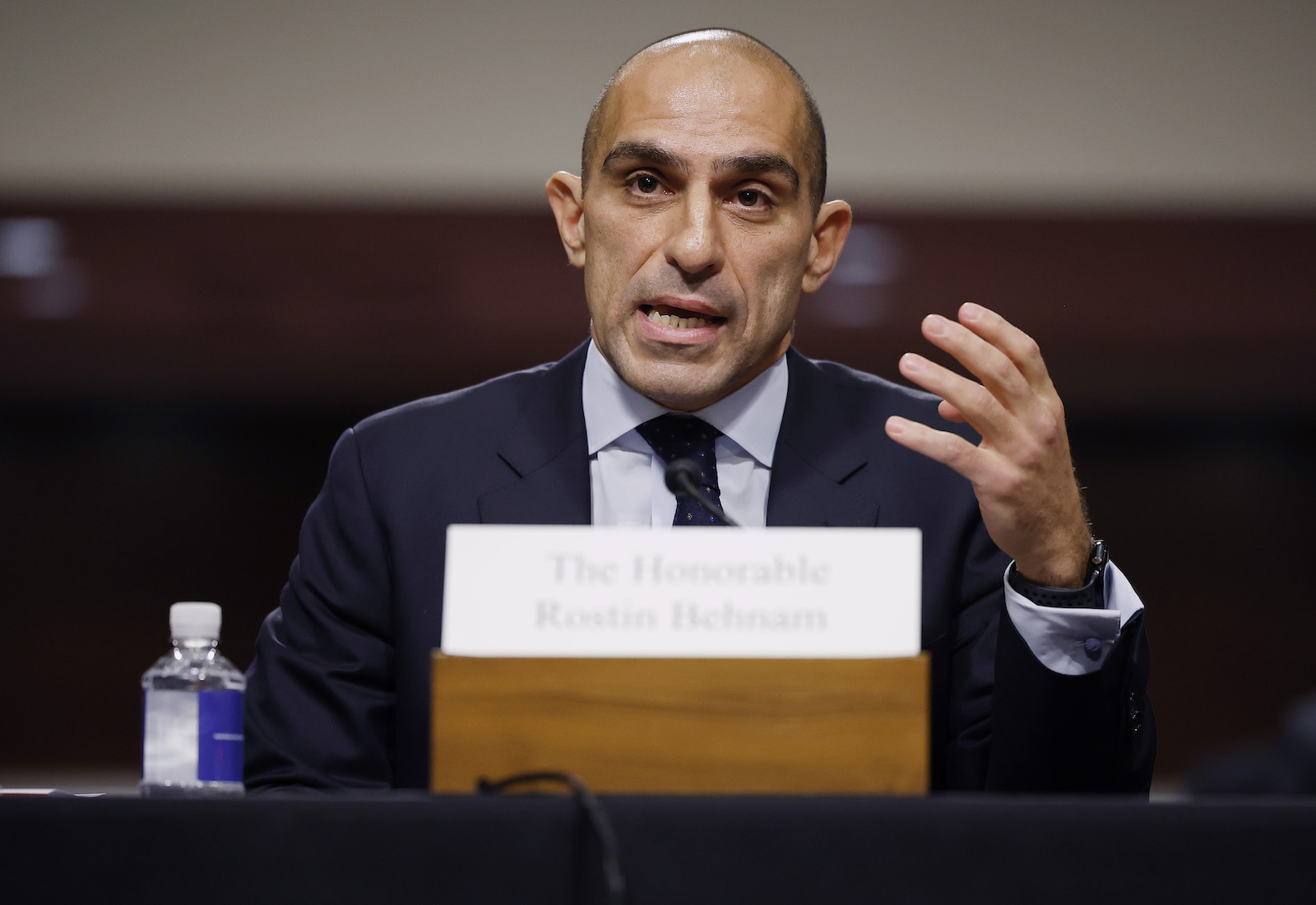
Across the United States, more and more companies are pledging to zero out their greenhouse gas emissions using “voluntary carbon offsets” — credits that represent some amount of climate pollution that’s either prevented or removed from the atmosphere.
These credits, bought and sold on unregulated markets that are expected to be worth up to $100 billion by 2030, have long drawn criticism for failing to deliver on their promised emission reductions. Some credits come from projects that claim to protect forests that were never in danger of being cut down. Others pull carbon out of the air, but only temporarily, or are susceptible to “double-counting,” in which the same credits are claimed by two separate organizations. Experts have described offsets as a “climate scam” and the voluntary market for them a “Wild West.”
Now, federal regulatory agencies are beginning to take note. One of these is the Commodity Futures Trading Commission, or CFTC, an independent government body charged with ensuring the stability of the country’s derivatives markets. This week, the commission held its second roundtable discussion on promoting “integrity for high quality carbon credit derivatives,” and other recent actions suggest that it’s gearing up for a more proactive regulatory role in this space.
Last month, for example, the CFTC released a whistleblower alert asking the public for tips about fraud and manipulation in voluntary carbon markets — a “precursor” to bringing enforcement actions against market manipulators, according to Todd Phillips, a fellow at the think tank the Roosevelt Institute. Just a few days later, the CFTC announced a new Environmental Fraud Task Force within its enforcement division, to help investigate cases of “fraud and misconduct” in offset-related markets.
“The CFTC is uniquely situated to address this issue,” Phillips said. “There really is no one else.”
Exactly how they’ll do it, however, is uncertain.
The Commodity Futures Trading Commission, created by Congress in 1974, regulates the U.S. markets for derivatives, contracts between parties in which prices are derived from the value of an underlying asset or benchmark. Such contracts can help hedge against risk; a futures contract, for example, guarantees the price for which a given asset will be sold at some point in the future. Farmers often use these kinds of contracts to guarantee their crops will sell for an agreed-upon price at the end of the harvest, protecting them from a downward swing in the market. Meanwhile, the CFTC’s job is to ensure that the crops actually get delivered, as per the contract.

This is all relatively straightforward when it comes to derivatives involving tangible commodities like wheat, which the CFTC has long regulated. But it’s more complicated when it comes to carbon offsets. Offset credits are usually approved by unregulated standard-setters, sold to brokers, and then purchased by a company or organization to count toward their decarbonization pledges — often via a futures contract, if the emissions offset has yet to happen and is promised to occur at some point in the future. Compared to wheat, it’s much less obvious what counts as the legitimate delivery of a carbon credit. Many market participants are concerned that if the underlying commodity — the offset — is based on fraudulent assumptions and does not actually cancel out climate pollution, then derivatives based on those commodities are also fraudulent.
This is already a huge problem; experts have noted “widespread perverse incentives” among market participants to inflate the climate benefits of their carbon credits. Buyers are motivated by low prices, for instance, and unregulated standard-setters run carbon credit registries that charge fees based on the volume of credits bought and sold, incentivizing them to set looser standards to enable more sales. Already, millions of rainforest-related credits approved by Verra, the world’s largest standard-setter for the voluntary carbon markets, have been shown to be “nonadditional,” meaning they didn’t yield additional emission reductions on top of what would have been expected if the credits didn’t exist.
Robin Rix, Verra’s chief legal, policy, and markets officer, acknowledged at the CFTC roundtable on Wednesday that voluntary carbon markets have characteristics that make them “vulnerable to abuse by malicious actors.” But he said it’s a “misconception” that voluntary carbon markets lack transparency and said his organization would support “a more muscular approach to fraud and market manipulation” from the CFTC.
Verra controls two-thirds of the world’s voluntary carbon markets. The rest are largely dominated by just three other private registries: the Climate Action Reserve, Gold Standard, and the American Carbon Registry.
The CFTC has so far not waded into this morass, although many experts, advocacy groups, and even private businesses would like it to. Following the commission’s first public convening on voluntary carbon markets last year, dozens of organizations responded to a request for information by saying that the CFTC should develop standards for carbon offsets that “effectively reduce greenhouse gas emissions and can serve as underlying commodities for approved derivatives.”
Freya Chay, program lead for the climate data nonprofit CarbonPlan, said such standards should require voluntary carbon markets to clearly distinguish between offsets that prevent carbon emissions — like if a project developer builds a wind farm rather than a coal plant — and those that remove carbon from the atmosphere. She also called for greater transparency around the “permanence” of removal-based offsets, i.e., how long they will keep carbon locked up. CO2 lasts around 1,000 years in the atmosphere. Meanwhile, carbon credits derived from offset projects like tree-planting — which might only keep carbon sequestered for a dozen years, since forests are susceptible to wildfires and illegal logging — are often treated the same as those derived from geological sequestration, in which carbon is injected into rock formations and is more likely to stay put.

It’s not clear, however, whether a definition of what constitutes a high-quality carbon offset will come from the CFTC. Many speakers at Wednesday’s roundtable said that, in order to allow the voluntary carbon markets to “reach their full potential,” the commission should leave definitional work to the private sector, perhaps in the hands of an independent body called the Integrity Council for Voluntary Carbon Markets. One speaker, representing an advocacy group for forest owners, called for the CFTC to only regulate with “a light touch” that allows standard-setters like Verra to continue to “innovate.”
Phillips, with the Roosevelt Institute, said the CFTC should simply hold standard-setters responsible for the claims they make. During the roundtable, he emphasized three words: “enforcement, enforcement, enforcement.”
Groups like Verra or the American Carbon Registry “have standards that say if you meet these standards, your offsets will count as one ton of carbon emissions reduced,” Phillips said in an interview with Grist. “If they make these assertions while knowing that they’re not true, that’s fraud.” In such a case, the CFTC could impose civil monetary penalties, freeze assets, or restrict an organization’s trading privileges. The commission could also refer the case to the Justice Department for prosecution.
As carbon markets grow, it’s likely that the CFTC’s efforts will complement or even overlap with work from other federal agencies to prevent offsets-related greenwashing. The Securities and Exchange Commission, for example — an independent regulatory agency in charge of protecting investors — has proposed rules that would require companies to disclose “certain information” about offsets they use, although it’s not yet clear what kind of information this would include. Some experts say another agency, the Federal Trade Commission — tasked with enforcing the United States’ consumer protection laws — could step in by including a more concrete (albeit nonbinding) definition of a high-quality carbon offset in its soon-to-be-updated guidelines for environmental marketing claims.
Phillips, however, is pinning his hopes on the CFTC, which he said has shown the most interest in bringing enforcement actions. Indeed, commissioners on Wednesday spoke forcefully about the need to clean up the voluntary carbon markets.
“The rapid growth of these markets requires the commission’s careful attention,” Commissioner Kristin Johnson told attendees. “Our common goal must be to adopt a transparent path that effectively prevents double-counting, ensures additionality, and prevents fraud.”
The CFTC has issued another request for information from the public and is accepting submissions until August 18.
This story was originally published by Grist with the headline This little-known federal regulator could crack down on fraudulent carbon offsets on Jul 21, 2023.

In October 2021, Norway’s Supreme Court ruled that a wind farm built on the country’s central-west coast violated the protected cultural rights of the Indigenous Sámi by infringing on their reindeer grazing lands. On June 3, 2023, exactly 600 days after the ruling, the $1.3 billion Fosen wind farm was still operating. To mark the anniversary of the court’s decision, members of the Norwegian Sámi Association’s Youth Committee, known as NSR-N, demonstrated outside the Norwegian Parliament. On June 26, Motvind Norge, an organization that opposes wind power on conservation grounds, blocked the entrance to the wind farm in Fosen, shutting down the facility for a week.
Police successfully cleared the protestors, fining many of them. Meanwhile, there is no sign the government or the company behind the wind farm will take action to comply with the court’s decision, or respond to the demands of Sámi leaders to remove the wind farm entirely. As the court ruling’s second anniversary approaches, organizers with NSR-N say they will intensify their protests if the government fails to take action.
The civil disobedience began in February of this year, when 13 Sámi youth from NSR-N began occupying the Ministry of Petroleum and Energy in Norway’s capital, Oslo, to mark 500 days since the Supreme Court ruling. Within a week, they were joined by nearly 200 human rights campaigners, including members of Young Friends of the Earth, the largest environmentalist youth organization in Norway, and Swedish climate activist Greta Thunberg. By the end of the protests, 10 ministries were shut down, and 2,000 supporters joined NSR-N organizers as they ended the peaceful occupation at Norway’s royal palace. In response to the February protests, Terje Aasland, the minister of petroleum and energy, offered Sámi reindeer herders an apology.

“The licensing decisions entail a violation of human rights,” wrote Aasland at the time. “The reindeer-herding Sámi at Fosen have been in a demanding and unclear situation for a long time. I’m sorry for that.”
The Fosen wind farm, Norway’s largest wind project, has faced resistance from Sámi reindeer herders and human rights advocates since it was greenlit in 2010. Built near the city of Trondheim, the farm is located in Sápmi, the traditional homelands of the Sámi people that stretch from Norway across Sweden and into Finland and Russia. The turbines were built on legally recognized reindeer herding districts that two Sámi communities, known as siidas, need access to for survival.
“My mood, my state of mind, my personal life, my professional life: Everything has been affected in a negative way by wind power,” said Terje Haugen, a reindeer herder affected by the Fosen wind farm. “I still have reindeer, but they don’t want to go near the wind turbines and have separated into smaller herds and spread along the coast. It’s a big problem that they have scattered into small flocks, it makes it very difficult to keep track of them.”
Appeals from the Sámi prior to construction went ignored. Reindeer herders filed suit in 2013 against Fosen Vind DA, a joint venture company with majority ownership held by Nordic Wind Power DA, a European energy consortium, and Statkraft, a state-owned Norwegian power company. But as the case wound its way through the courts, the developers continued constructing the wind farm, and in March of 2021, turbines went into operation. In the fall of 2021, Norway’s Supreme Court unanimously ruled that the licenses for the Fosen wind farm were invalid as the construction violated Sámi reindeer herders’ “right to enjoy their own culture” and their human rights.
“The exploitation of the areas that the reindeer herders are entitled to use is illegal without permission from the reindeer herders themselves or an expropriation permission from the authorities,” said Erik Keiserud, a respected Supreme Court lawyer with experience in reindeer-business law and criminal procedure.

But excluded from the ruling was any requirement for action, such as the demolition of the wind farm, a deadline for the Ministry of Petroleum and Energy to find a satisfactory solution, or sanctions against the government.
“The developers have the final responsibility to decide whether they are entitled to use another person’s property contrary to the rights of others,” said Keiserud.
Sámi observers say there has been no discernable change at Fosen since the Supreme Court ruling, and the wind farms continue producing electricity.
“We have made important steps forward and I am committed to further progress,” said Norwegian State Secretary Elisabeth Sæther. “The Minister of Petroleum and Energy has initiated mediation between the reindeer herders and the wind power concessionaires, with the aim of reaching an agreement that secures the reindeer herders’ rights and is acceptable to both parties.”
Norway’s wealth relies heavily on the extraction of oil and gas, which is exported primarily to the European Union and the United Kingdom. Energy, including oil and gas production, accounts for approximately one-third of Norway’s economic output. Since the beginning of the war in Ukraine, increased demand for energy from Europe has led to nearly $100 billion in Norwegian oil and gas profits as Russia reduced its gas exports. Norway is now the primary fuel supplier to Europe — and has agreed to increase natural gas exports by 2 billion cubic meters to alleviate Europe’s energy shortage.
Meanwhile, nations rush to keep pledges to fight global warming by transitioning to renewable energy sources.
According to Statskraft, Norway, a country of roughly 5 million people, produces around 154 terawatt-hours of electricity annually — enough to power nearly 15 million U.S. homes for a year. Approximately 98 percent of that electricity comes from renewable sources like hydropower and wind, and in 2021, almost 26 terawatts were exported, with a majority sent to Denmark.
“The fact that they are calling the wind turbines a necessary tool for the green transition is like putting makeup on a dead body.”
Torbjørn Lindseth, founding member of Motvind Norge.
Norway has pledged to transition from fossil fuels to greener energy sources in order to combat climate change, and that “green transition” reflects a long tradition in the country: Norway has relied on hydropower for more than a century, and in the last 20 years, wind power has become a major source of energy with massive potential for expansion. In that time period, nearly 100 licenses for new wind farms have been granted by the Norwegian government, many of them in Sápmi. Currently, there are 53 wind farms in the country, including those under construction.
Tom Kristian Larsen, general manager of Fosen Vind DA, said a power shortage in the area necessitated the construction of the wind farm, as well as the need to curb high power prices. “The production additionally contributes to reduce CO2 emissions and supplies energy to industries in support of their climate targets,” he said.
Silje Karine Muotka, president of the Sámi Parliament, said wind farms in Sápmi amount to green colonialism.
“New wind power plants are often justified with reference to sustainable development,” said Muotka. “Developing a wind power industry in reindeer herding areas can mean destroying the possibility of reindeer husbandry. In Fosen, this means wiping away an entire culture, bit by bit, all in the name of sustainable electricity.”
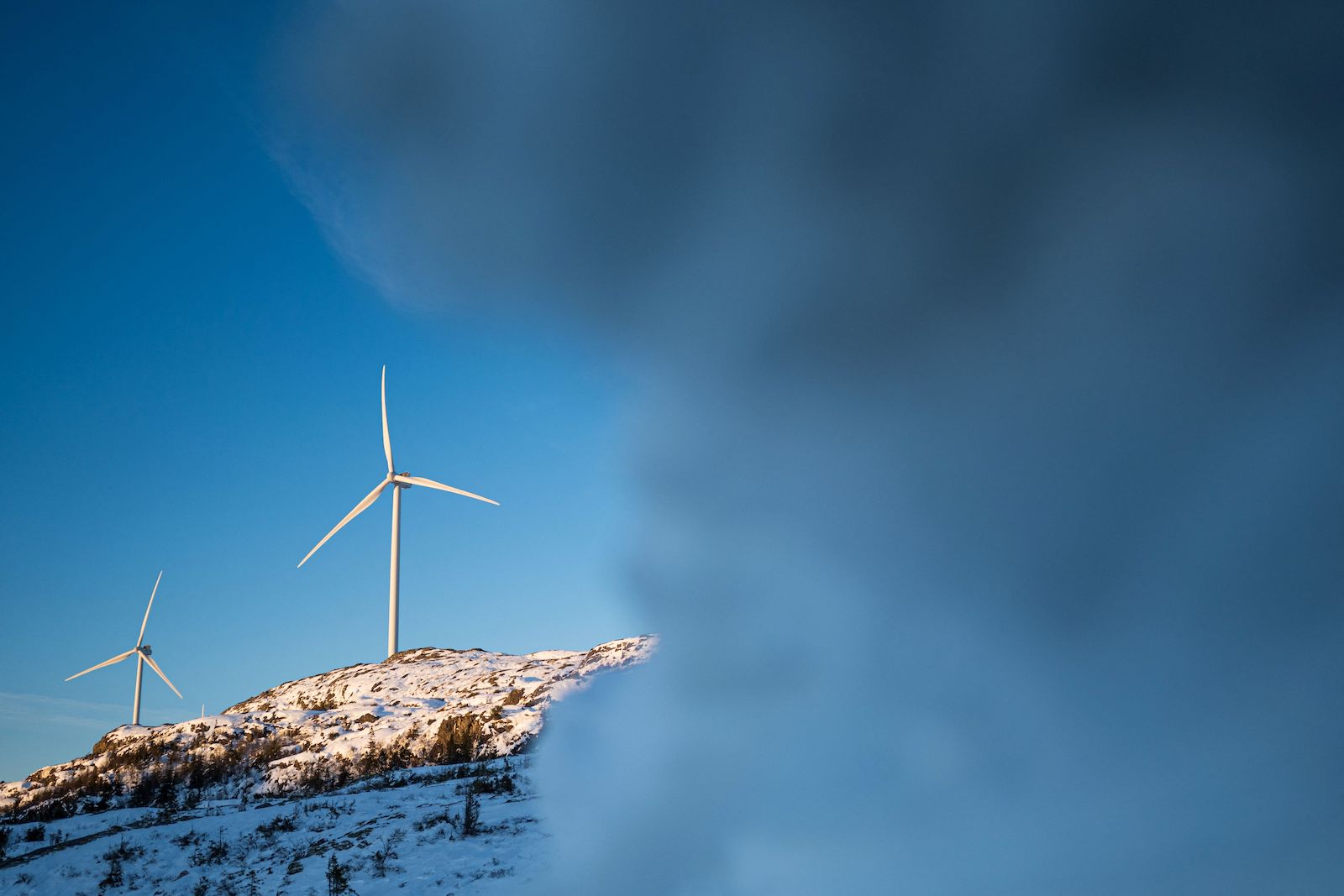
Statkraft said the company is optimistic about future mediation and is committed to finding an amicable agreement between the state, Fosen Vind DA, and the Sámi.
“I sincerely hope that the Supreme Court judgment will be acted upon,” said Haugen, the reindeer herder. “It is obscene: 20 judges have said no to the wind park staying in business. It is incredibly tragic that Norway doesn’t have a rule of law anymore.”
For the Sámi, the only satisfactory scenario is a complete removal of the Fosen wind farm. NSR-N and its supporters are currently planning action in Oslo in September to highlight the two-year anniversary of the Supreme Court’s ruling.
“The human rights defenders … use the strongest means of action that individuals have — civil disobedience,” said Muotka, the Sámi Parliament president. “They are familiar with the consequences.”
This story was originally published by Grist with the headline Norway’s largest wind farm violates Indigenous rights. Why won’t authorities take action? on Jul 21, 2023.
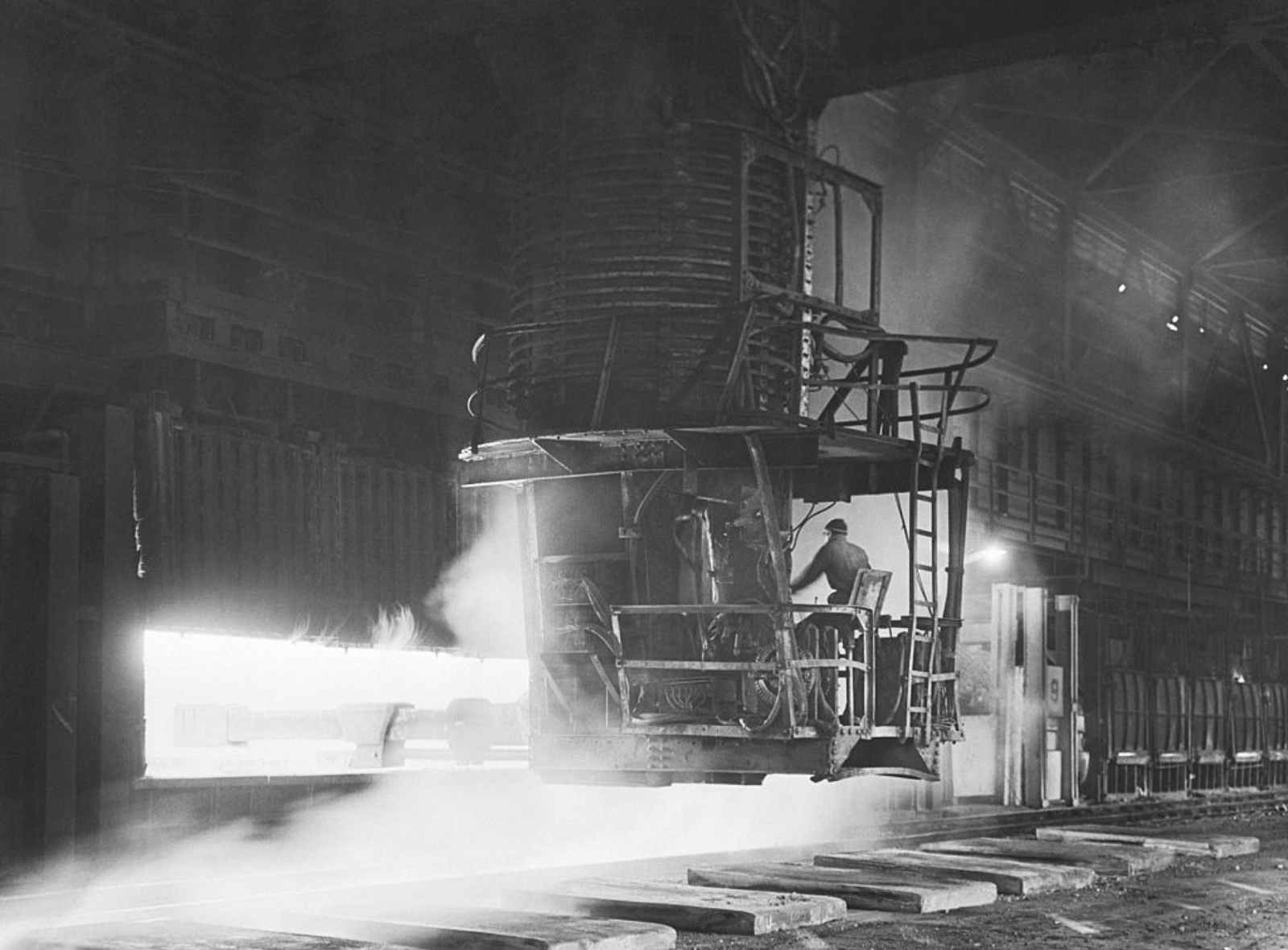
Kimmie Gordon remembers the many parents who worked in the steel mills. They were folks like her stepfather, who drove each day to the eastern side of Chicago or to Burns Harbor, Indiana where they toiled in the heat of massive furnaces, burning coal and iron ore to produce steel. The jobs paid well but the work was dirty. A fine layer of black soot seemed to coat everything they owned, even the insides of their lungs.
Gordon didn’t know it when she was growing up in the 1980s, but the pollutants that gathered in the folds of the workers’ clothing was in the air all over Gary, the majority-Black city in northern Indiana where she was raised. Today, the stretch of towns along the state’s border with Illinois is home to four of the country’s highest-polluting steel mills, which together account for 90 percent of the industry’s emissions, dumping hundreds of thousands of pounds of toxic heavy metals like lead and chromium into the air each year.
Earlier this month, the Environmental Protection Agency proposed new rules for steel mills, aiming to cut toxic emissions by 79 tons per year, a 15 percent reduction from current levels, and requiring that U.S. Steel and Cleveland Cliffs, the only two companies operating the country’s 11 steel mills, measure concentrations of cancer-causing chromium along the borders of their sites. The EPA estimates that the new rules would also cut particulate pollution by 500 tons per year.
It’s the first step that the agency has ever taken to reduce emissions from leaks and equipment malfunctions at steel mills and comes after three separate lawsuits over 20 years. Local advocates that Grist spoke to said that the proposed measures, while welcome, are not nearly enough to keep their communities safe. Gary leads the nation in the amount of toxic industrial emissions per square mile.
“The EPA could have done better because we’re in a crisis,” said Gordon, who serves as the director of Brown Faces Green Spaces, a local environmental organization. “This 15 percent reduction means nothing to the people of Gary. Our needle is all the way past the red.”
The city of Gary was built around the steel industry. Once a quiet stretch of dunes on the lower rim of Lake Michigan, the area was transformed over the course of the early 20th century into a bustling mill town. U.S. Steel was the engine of this transformation, leveling hundreds of square miles of dunes and woods to erect mazes of furnaces and industrial ovens that belched black smoke into the air. After the Second World War, many white families moved to the suburbs and factory jobs declined, sowing the seeds of the city’s decline. Today, the population of Gary is 68,000, less than half its 1960 high of 178,000, and nearly a third of residents live in poverty, according to U.S. Census data. The toxic emissions remain.
Producing steel is a highly polluting enterprise that involves burning coal and combining the product, known as coke, with iron ore in a furnace before melting it all down into liquid steel. The chemicals released from this process include heavy metals like lead and arsenic, as well as fine particles that can get lodged inside lungs when inhaled. These pollutants have been linked to different cancers and chronic diseases, and numerous studies have made connections between steel mill emissions and impaired heart and lung function.
Advocates sued the agency after it proposed the first standards for steel mills in 2003, arguing that those rules failed to control the release of carcinogens from several highly polluting types of equipment in facilities. In response, the agency agreed to revisit its proposal, but after years went by without any sign of a revised rule, advocates sued again in 2015. When the EPA produced a new rule in 2020, many residents were disappointed to find that it still did not control for many of the cancer-causing pollutants released by steel mills. They filed a third lawsuit later that year. James Pew, a senior attorney at the environmental nonprofit Earthjustice who litigated all three of these cases, told Grist in an interview that the successive delays in regulation have enabled pollution to pile up in communities near mills, since heavy metals released into the air fall to the earth and accumulate in the soil, exposing residents, generation after generation.
“Their neglect over the last two to three decades has caused enormous harm,” Pew said. “Gary, Indiana has 100 years of lead buildup because the EPA has never done anything about it.”
The EPA previously said it’s not required to develop new emissions standards for unregulated steel mill pollutants, an assertion that was shot down by a federal circuit court in 2020. In an email, an agency spokesperson, Shayla Powell, told Grist that the newly proposed amendments would address regulatory gaps exposed by that court decision.

The rule that the agency proposed on July 12 would limit pollution from five previously unregulated sources within steel mills, like the open pits where the toxic by-products of smelting ore are dumped and the valves through which contaminated air is released to depressurize equipment. Once implemented, the regulations are projected to reduce toxic emissions by 15 percent, from 520 tons per year to 440 tons per year. Pew told Grist that this figure is particularly disappointing because the EPA’s own research indicates that much larger emissions reductions are possible, at a minimal cost to operators.
The EPA projects that the toxic emissions reductions in the proposed rule will cost these two corporations approximately $2.8 million each year to implement, an amount local advocates like Gordon consider paltry. U.S. Steel and Cleveland Cliffs made a combined $44 billion in sales last year.
Amanda Malkowski, a spokesperson for U.S. Steel told Grist in an email that the company was disappointed with the proposal, which would have “exorbitant costs for implementation and provide very little, if any, environmental benefit,” she said. “U.S. Steel is committed to environmental compliance and working with EPA to have regulations that are technologically and economically feasible, while providing an environmental benefit.”
Cleveland Cliffs did not respond to multiple requests for comment.
Roughly half of the emissions from steel production are directed into tall industrial chimneys, while the rest are released at the ground level through pressure valves and cracks in equipment. In a 2019 memo, the EPA estimated that operators could slash 65 percent of this latter set of emissions—190 tons per year in total—simply by implementing more stringent work practice standards. For example, the document cited a century-old protocol that could be used to prevent “slips,” a term referring to the situation in which raw materials fail to descend smoothly into furnaces, leading to high pressure conditions that cause valves to fly open, releasing toxic “dust clouds” into the air. Although the agency determined that slips should not occur more than four times every month, data submitted by mill operators indicates that some plants are averaging more than double that amount.
The proposed rule would require mill operators to set up monitors to measure levels of the toxic heavy metal chromium on the borders of their sites. If concentrations exceed the regulatory “action level,” operations would be required to submit an analysis identifying the cause. Advocates from mill towns told Grist that they appreciated the data collection requirement, but pointed out that steel mills emit over a dozen different toxic chemicals, principally lead, and wondered why the agency was limiting its monitoring efforts to one metal.
“There’s a bunch of things [in the proposal] where it’s like, ‘Oh, you guys did great,’ but there’s so many more chemicals that we’re being exposed to,” said Qiyam Ansari, an environmental advocate in Clairton, Pennsylvania, a small city in the Monongahela River Valley where U.S. Steel operates a mill and a separate coke plant. Since he moved to the valley, he said he’s suffered from asthma attacks that make it difficult to spend time outdoors.
Powell, the EPA spokesperson, told Grist that the agency had collected air samples at four steel mills over a six-month period, and found that lead concentrations were well below the national standard of 0.15 micrograms per cubic meter of air.
The EPA’s own analysis indicates that 27 percent of people living within 3 miles of the country’s operating steel mills are Black, making the pollution an issue of environmental justice, a term that refers to the disproportionate pollution borne by low income people and communities of color across the country. The proportion of Black residents in Gary and Clairton are 78 percent and 41 percent, respectively, much higher than the roughly 14 percent share of the U.S. population.
It could take years before the proposed rule takes effect. Once it’s posted in the Federal Register, the EPA will accept written comments from the public for 60 days. The agency is then required to consider the comments and update the rules based on feedback before finalizing them. Along the way, it may face legal challenges from advocates or industry groups.
In May, Adam Ortiz, the EPA administrator for the mid-Atlantic region, which includes Pennsylvania, traveled to Clairton to listen to residents’ concerns about pollution from steel production. Ansari said that after reviewing the details of the agency’s newly proposed standards, he believes that little will come of Ortiz’s visit.
“I’m continuously disappointed and lose my faith in our regulators the more I do this work,” he said.
This story was originally published by Grist with the headline The EPA is cracking down on steel mill pollution. In Gary, Indiana, it might not be enough. on Jul 21, 2023.
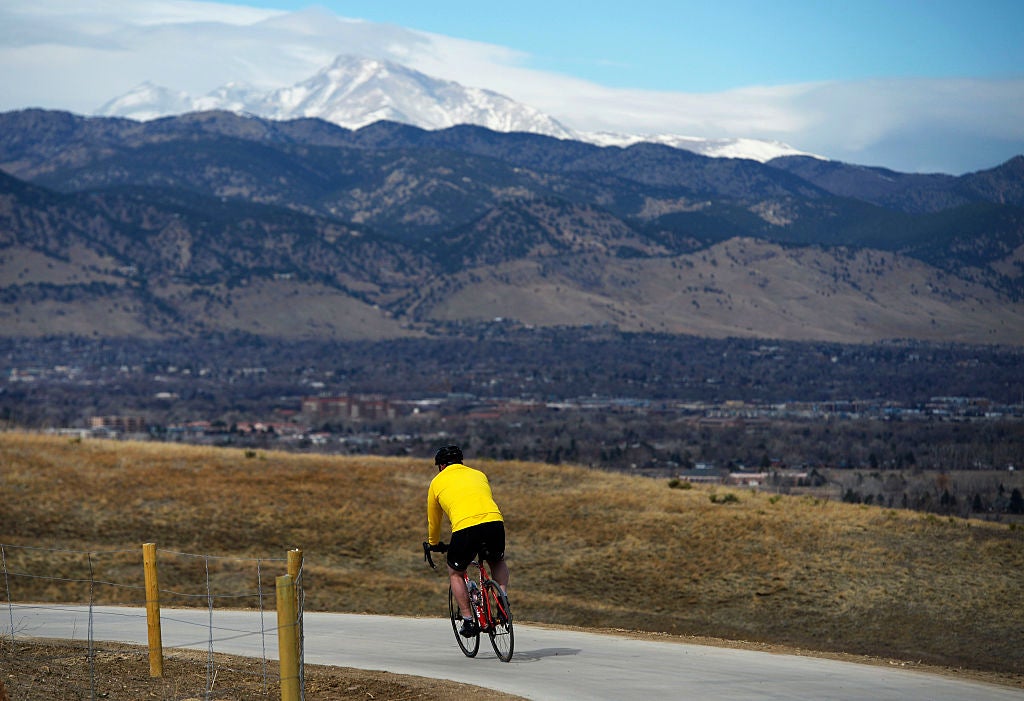
Copenhagen and Amsterdam are famous for their sprawling bike paths and hoards of cyclists, but some U.S. cities are also on the biking bandwagon.
Transportation is the largest contributor to greenhouse gas emissions in the United States, and it’s clear that if we don’t curb our car usage, runaway climate change will only worsen. The World Health Organization finds that investments in policies that promote bicycling and walking are crucial for mitigating climate change and protecting the environment. By choosing to bike over riding in the car just once a day, the average person can reduce their transportation-related carbon emissions by 67%.
These U.S. cities are setting an example for how people-powered transportation can look. PeopleforBikes evaluates cities for their bikeability based on how many people ride bikes, the ease and safety of biking, the breadth of neighborhoods serviced by bike infrastructure, and how quickly the bike network is expanding. These ratings change a bit every year, but there are a few that consistently jostle for top positions.
If you’re looking to plan a vacation somewhere where you can see the sights via bike, or choosing your next dwelling place based on bikeability, here are a few of the most bike-friendly cities in the United States.

Take in views of the Rocky Mountains from a bicycle in Boulder. This city of over 100,000 took first place in PeopleForBikes’s 2019 ratings of the most bike-friendly cities in the U.S., and riding down its 300 miles of bikeway, it’s easy to see why — not to mention that Boulder sees 300 days of sunshine a year. Across the city you’ll see multi-use paths that are separate from car traffic, and designated underpasses for cyclists and pedestrians. People in Boulder are 20 times more likely to bike to work than the average American, but if you get caught in the rain and need to hop on a local bus, the whole fleet is equipped with bike racks. Dozens of self-service kiosks across the city rent out bikes, courtesy of Boulder Bcycle.
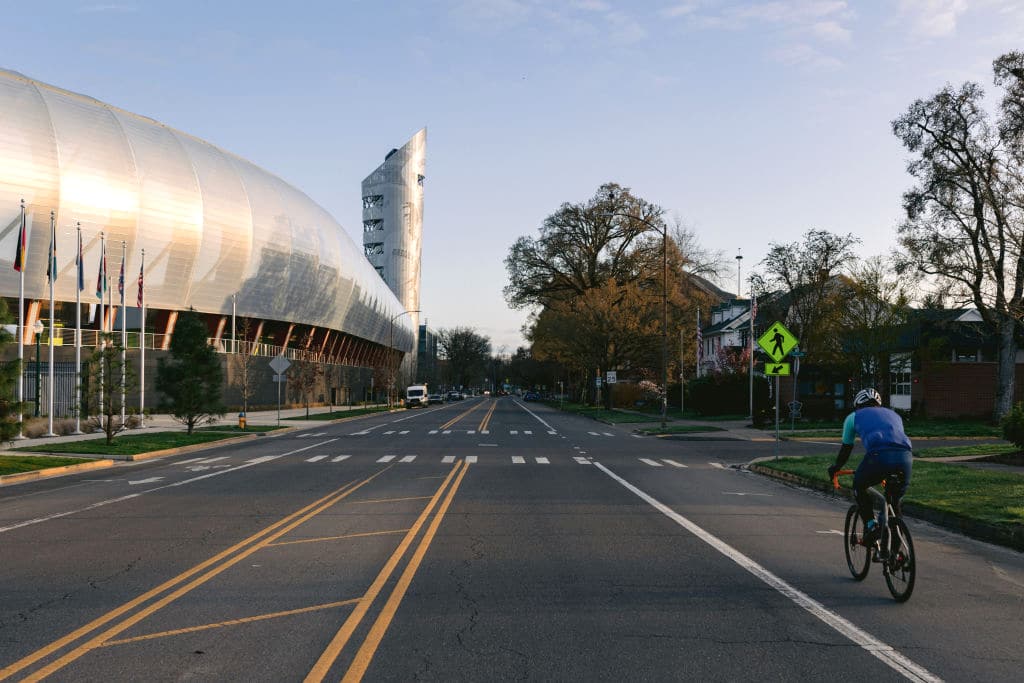
Biking has a long history in Eugene. The city started putting together bikeways in 1972 at the urging of the mayor (who was a cyclist himself). Now, it consistently ranks highly in surveys of bikeable cities, and was named a Certified Gold Level Bicycle Friendly Community by the League of American Bicyclists. The city has a strong bike culture — aided by decades-old community organizations like The Greater Eugene Area Riders — and boasts 46 miles of shared-use paths, 187 miles of on-street bicycle lanes, and 71 miles of signed bikeways/neighborhood greenways. Their Safe Routes to Schools program is also making improvements to walking/bicycling infrastructure used by students getting to and from school, like adding better bike lanes and having safer crossing areas for cyclists and pedestrians.
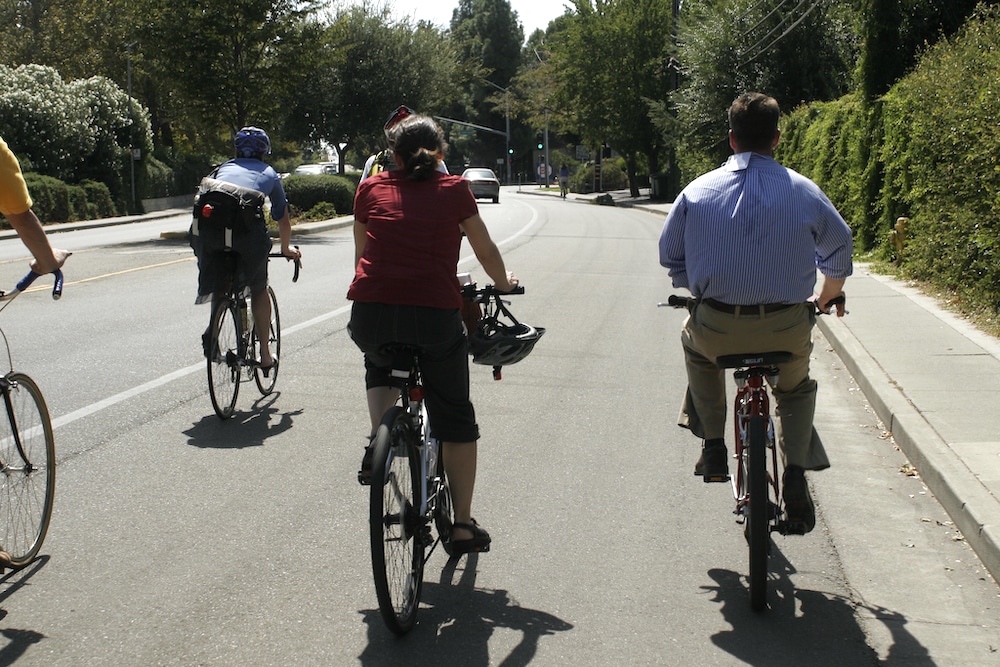
Davis opened its first bike lane in 1967 and never looked back. Now, 98% of main streets in the city have some kind of bicycle infrastructure — including wide paths removed from the street and air pumps placed throughout the city’s major corridors — and with its great weather and relatively flat terrain, the high bike-commuting rate of 13.8% comes as no surprise. The modal share for cycling in the city is around 20%, nearing the iconically-bike-friendly Netherlands’ 25%. If you need further proof of these high cycling rates, the Third Street Bike Counter displays a digital reading of how many cyclists passed that day, the day before, and the total for the year so far.
Davis is even home to the United States Bicycling Hall of Fame, and the nonprofit Davis Bike Collective houses a public DIY shop with tools for repairing bikes. Residents can register their bike with the city through Bike Index, which helps identify bikes that have been lost or stolen.
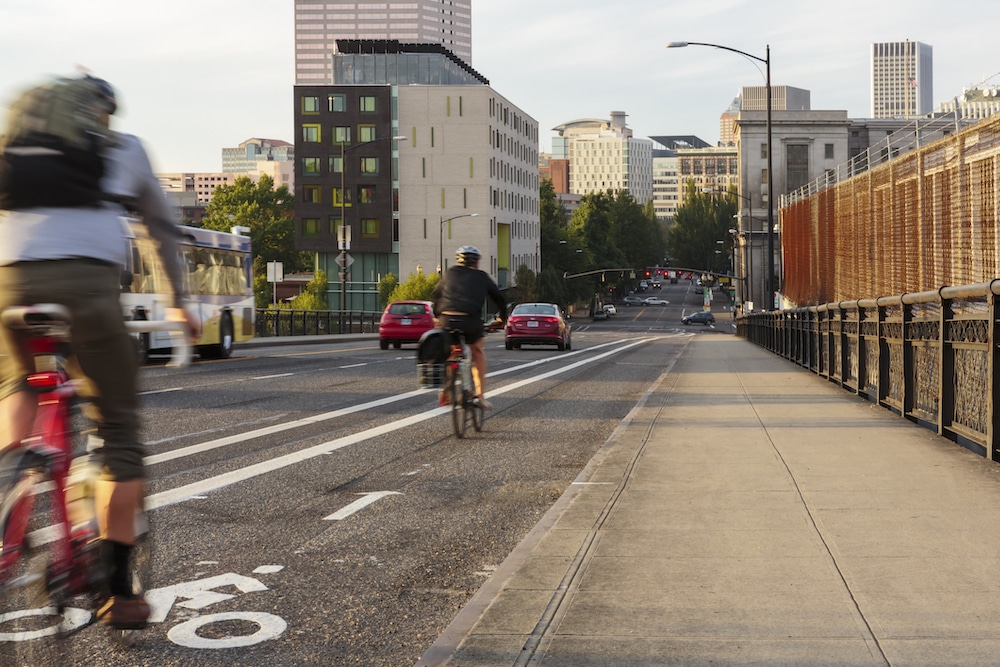
In 2017, 6.3% of Portlanders (over 22,000 people) commuted by bike, which is the highest percentage of bike commuters of any large American city. Compared with the national percentage of 0.5%, it’s clear Portland values bikeability. Their bike network is 385 miles in total — which includes greenways, bike lanes, paths, and shared roadways — with nearly 100 more miles to be installed within the next few years. In total, the city’s bicycling infrastructure is valued at $60 million, and it’s among the five U.S. cities to receive the Platinum Level Bicycle Friendly Community certification by the League of American Bicyclists, its highest designation.
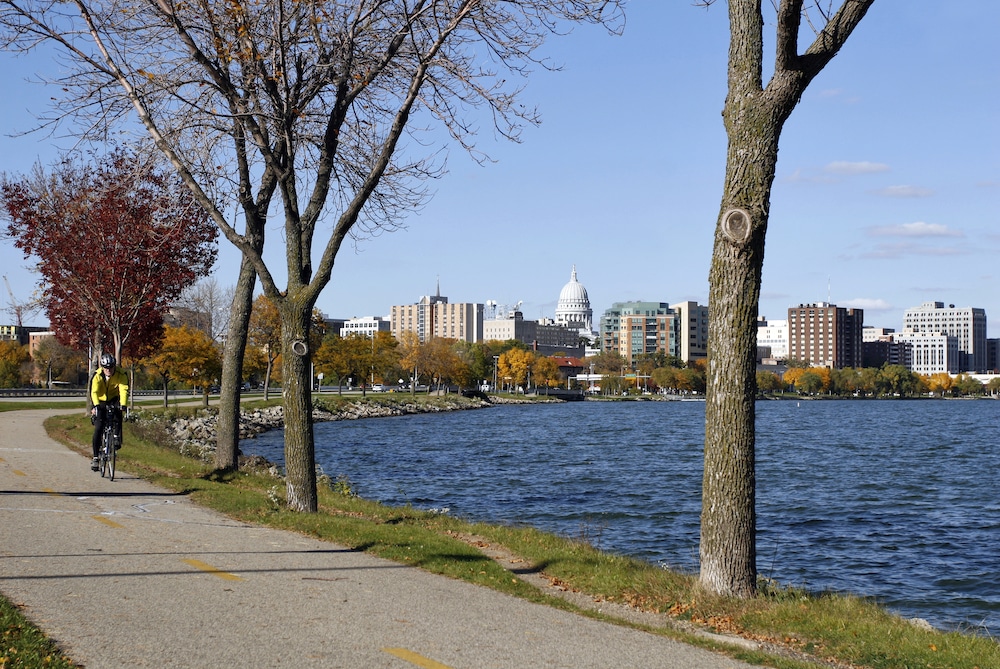
The unofficial bike capital of the Midwest, Madison touts that the city has more bikes than cars. It was named one of the healthiest cities in the country in 2015 by Livability, in part due to its walk- and bikeability. About 5% of residents commute by bicycle, and Madison BCycle makes it possible for visitors to check out bikes at over 40 locations around the city.
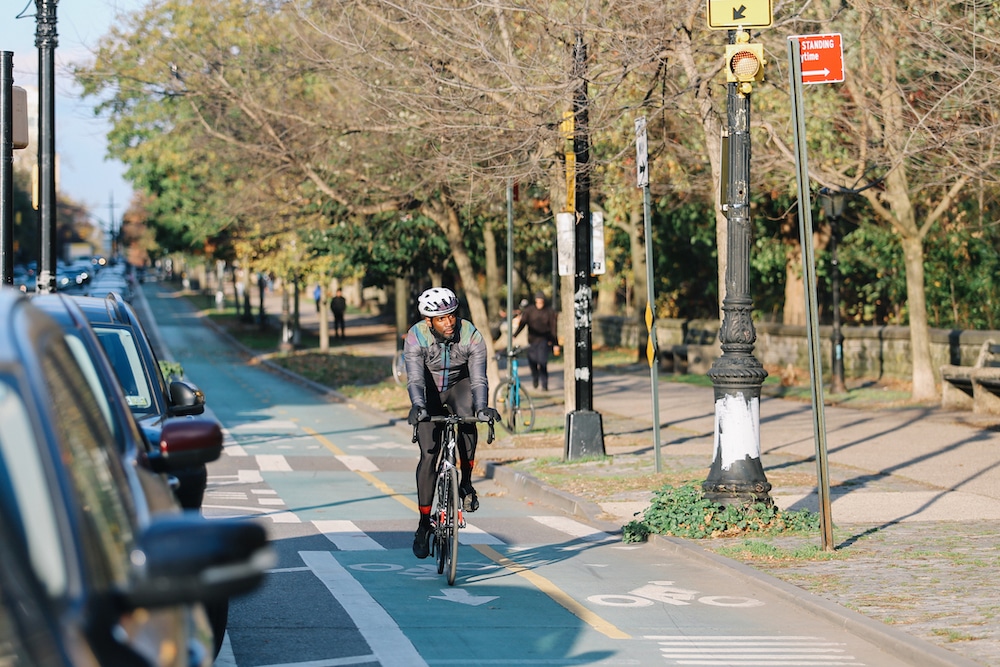
You might not expect a bustling, high-density city of 2.6 million to rank among the most bike-friendly of cities, but PeopleForBikes ranks Brooklyn over all other New York City boroughs, and 10th overall in the country.
On Hoyt Street in Downtown Brooklyn — one of the busiest commuter streets in the borough — bikes now outnumber cars, according to The New York Times. The popular rentable Citi Bikes are now ubiquitous, and every day sees 450,000 bike trips across the city, 20% of which are made by commuters. Brooklyn itself has more than 300 miles of bike paths, lanes, and greenways — more than any other borough — and claims to be home to the original bike path circa 1894: the Ocean Parkway Bike Path, which stretches from Coney Island to Prospect Park.

This mid-sized city in Northern Colorado is often neck-in-neck with Boulder in national ratings of bike-friendly cities. With 200 miles of dedicated bike lanes, multi use trails, bikeways, and shared roadways criss-cross over practically the whole city — all against a backdrop of the Rocky Mountain foothills — it is another recipient of the coveted Platinum Level Bicycle Friendly Community certification. The city’s trails, however, are the real star of the show. The Poudre River trail is 12 miles long and runs along the Cache La Poudre River (a National Heritage Area), which cuts right through downtown and then connects with another 22-mile section of trail — and in typical Colorado fashion, the trail heads right towards some of the city’s many craft breweries. Mark your calendar for the city’s Bike To Work (or Wherever) Day every year, where bikers can pick up free breakfast from local businesses and organizations all over town.

Consistently named one of the country’s most bike-friendly cities, San Francisco is home to beautiful, scenic bike paths like the Golden Gate Bridge Bike Trail, as well as robust biking infrastructure throughout the city. An average of 128,000 bicycle trips are taken daily on 463 miles of bikeway, and 16% of San Franciscans are “frequent cyclists,” meaning they bike two or more days a week. SFMTA has a trip planner on their website where residents and visitors can type in their start and end locations to find the best biking route there, and rent a bike from one of the 280 bikeshare stations across the city.
The post 8 of the Most Bike-Friendly Cities in the U.S. appeared first on EcoWatch.
The naturally occurring hormone melatonin, known to help with sleep, has been found to have another unrelated benefit: It can extend the freshness of fruits and vegetables.
Melatonin is produced by the brain, and is also present in many plants, including bananas, cherries, tomatoes, rice, wheat and olive oil.
When fruits and vegetables are transported in refrigerated trucks or stored at temperatures that are too cold, they can get “chilling injury,” reported Food Ingredients First. Researchers have recently found that melatonin can prevent this common postharvest issue.
Horticultural scientists from Edith Cowan University (ECU) have spent the past year compiling research from across the globe on melatonin’s benefits for keeping fruits and vegetables fresher for longer, a press release from ECU said.
“You will often see abnormal ripening, sunken spots, pitting, hardening of flesh and browning of peel and pulp in cold-stored fruits, while browning of tissues, translucency and water-soaked lesions in the vegetables, that is what we call chilling injury,” said Zora Singh, Foundation Professor of Horticultural Science in ECU’s School of Science and lead researcher of the study, in the press release.
The study, “Insight into the Role of Melatonin in Mitigating Chilling Injury and Maintaining the Quality of Cold-Stored Fruits and Vegetables,” was published in the journal Food Reviews International.
According to Singh, 44 percent of fresh produce goes bad between harvest and consumption, with chilling injury a major cause.
Berries can be kept fresh in the refrigerator for a week to 12 days, while fruits like apples can stay fresh in storage for as long as nine months. Fruits that grow in tropical and subtropical climates are most at risk for chilling injury.
“The average storage temperature for subtropical fruits and vegetables usually range[s] from 4–8°C while 10–20°C is optimum temperature to avoid chilling injury in tropical horticultural produce,” Singh said.
Singh and the research team said melatonin has been shown to reduce or prevent chilling injury’s effects on fruits and vegetables, and that it can be used instead of chemicals.
“Melatonin is a natural sleeping hormone in living organisms, and it is also helpful in reducing chilling injury symptoms and membrane leakage by maintaining higher levels of antioxidants and freshness of horticultural produce,” explained researcher and Ph.D. student Shoaib Shah in the press release. “Melatonin is a safe alternative to hazardous chemical treatments, without any adverse effects on consumer health.”
As annual food losses mount worldwide, preserving more produce without the use of dangerous chemicals could help with global food security.
Each year, an estimated $400 billion worth of food, that’s 13.2 percent, is lost from harvest to market, while 17 percent of food is wasted by the food service industry, retail and households. Food waste and loss are responsible for an estimated eight to 10 percent of greenhouse gas emissions worldwide.
Fresh produce production is declining due to several factors, like reduced water supplies, soil degradation, climate change and chilling injury.
“When it comes to grains and other produce for harvest, they are more resilient than fresh horticultural produce,” Singh said in the press release. “Fruit and vegetables are not only challenging to grow, preserving them is immensely difficult and this is a crisis affecting nations all over the world, so we need to find the solution to keep producing food from the earth in a sustainable way.”
The post Melatonin Is More Than a Sleep Aid — It Can Help Keep Fruits and Vegetables Fresh appeared first on EcoWatch.
There’s something about taking the train. The slow pace, the observation car where you are treated to a panoramic view of trees, hilly fields and rivers while reading and munching on a snack. Taking the train allows you to see the countryside connecting where you left to where you’re going, not just getting from point A to point B as quickly as possible.
It’s a journey, and it saves on carbon emissions, big time. Walking, biking and taking the train are the most environmentally-friendly ways to travel. Going by rail instead of flying can reduce your emissions by approximately 84 percent for domestic trips, according to Our World in Data.
A new Greenpeace Central and Eastern Europe study has found that people looking for travel options in Europe are being encouraged to fly instead of taking the train because of “an unfair competitive advantage” for the airlines, a press release from Greenpeace said.
The Greenpeace report looked at the costs of tickets for trains and airlines on 112 European routes at nine different times. It found that, on average, train tickets were twice as expensive as those for flights, with some routes astronomically higher. For example, the cost of a train ticket from London to Barcelona was 30 times higher than a plane ticket.
“One of the reasons people choose to fly rather than travel by train is price: why would anyone take the train from London to Barcelona and pay up to €384 when air tickets are available for the ridiculously low price of €12.99? Citizens deserve to have access to a clean, efficient and affordable transport system that does not harm the climate, people and our planet,” the report said.
Even though flying is so much worse for the planet than traveling by train, airlines don’t have to pay tax on kerosene, the main component of jet fuel, the press release said. There is no equivalent exemption for railways.
“Airlines benefit from outrageous fiscal advantages. Planes pollute far more than trains, so why are people being encouraged to fly? Low-cost airlines, in particular, have exploited every loophole and trick in the book. €10 airline tickets are only possible because others, like workers and taxpayers, pay the true cost,” said Lorelei Limousin, Greenpeace EU senior climate campaigner, in the press release.
Of the routes looked at for the study, 18 were domestic and 94 crossed country borders. On 71 percent of the routes, flights were cheaper than train tickets. Just 23 routes were “almost always” less expensive to make by train rather than flying.
Of the routes studied, 79 percent were operated by low-cost airlines, which “are in most cases cheaper than rail thanks to their unfair and aggressive pricing strategies,” the press release said.
“In short: if you fly, you are subsidised; if you take the train, you are punished by higher prices – as well as the fact that the journey is often longer,” said Stefan Gössling, a professor at Linnaeus University in Sweden who has studied flight emissions, as The Guardian reported.
In Europe, aviation as a producer of greenhouse gas emissions grew 29 percent from 2009 to 2019, the fastest-growing source in Europe in recent decades, according to the press release.
Greenpeace encourages European governments to introduce affordable, long-term climate tickets to be used for all public transportation means in a country or designated region, adding that they should be compatible with a climate ticket for international use. Revenues for climate tickets could be funded by the phasing out of airline subsidies, a “fair taxation system based on CO2 emissions” and taxes on windfall profits.
“For the planet and people’s sake, politicians must act to turn this situation around and make taking the train the more affordable option, or else we’re only going to see more and more heatwaves like the one currently wreaking total havoc in Spain, Italy, Greece and elsewhere,” Limousin said in the press release.
The post European Airlines’ ‘Unfair Competitive Advantage’ Makes Flying Cheaper Than Train Travel Despite Climate Costs appeared first on EcoWatch.
The Science and Technology Committee of the House of Lords of the UK has published a new report that highlights harmful health impacts from artificial light pollution and noise pollution. It recommends increased research and policies for these “neglected pollutants” that lack regulation and have impacts that are not well understood.
The report, titled “The neglected pollutants: the effects of artificial light and noise on human health,” shows how these pollutants negatively impact human health, which can also lead to poor economic and social outcomes.
“Not only can they cause annoyance, impacting quality of life, but through the disruption of sleep and circadian rhythms, both noise and light pollution can contribute to heart disease and premature death,” Julia King, Baroness Brown of Cambridge and chair of the House of Lords Science and Technology Committee, said in a statement. “Whilst the increased risk to an individual may be low, the exposure of millions of people results in a significant aggregate health burden.”
The World Health Organization has reported that traffic noise impacts about 40% of people in the European Union, and about one in five people in this region are exposed to dangerous levels of noise at night.
Further, the UK Health Security Agency suggests that traffic noise alone led to a loss of about 130,000 healthy life years in the UK. in 2018. Light pollution has been harder to track, but research suggests the rise of LEDs has also led to growing light pollution, according to the report.
In a separate review published in 2021, researchers analyzing studies on noise and light pollution found that these pollutants may have an impact on microbiomes, which could further impact human health. However, many studies on this topic are small or dated, so additional research is needed.
The Science and Technology Committee has come to a similar conclusion, noting that the UK’s 25 Year Environment Plan barely touches on these pollutants and doesn’t set any regulations on reducing noise or light pollution.
The committee advises that the UK should set up a specific advisory group on noise pollution and that the UK Health Security Agency should create a group dedicated to studying light pollution, similar to the established advisory group for air pollution, to assess health impacts. It suggests that the Department for Environment, Food and Rural Affairs (DEFRA) do more lab and field studies on the health impacts of these pollutants and create a method of tracking, monitoring and reporting light pollution. The committee also recommends policies that target the pollutants.
“The Government should focus on quantifying the health effects of noise and light pollution, set targets and a framework for regulation to reduce the overall burden of disease,” King said. “It should do this by the time of the next five-year Environmental Improvement Plan cycle. It must also strengthen coordination between departments and between central and local government, to ensure meaningful improvements in public health and quality of life in the UK for the benefit of all.”
The post Light Pollution and Noise Pollution Pose ‘Neglected’ Hazards, Health Experts Warn appeared first on EcoWatch.
It’s been nearly a year since Democratic lawmakers pushed the first new climate spending legislation in more than a decade over the congressional finish line. The Inflation Reduction Act of 2022, or IRA, includes $369 billion in clean-energy tax credits and funding for climate and energy programs, money that is already trickling into the economy as federal agencies begin to distribute it.
The Biden administration said the bill will help deliver on the president’s pledge to cut the United States’ emissions in half by 2030, and independent analyses estimated that it would help slash domestic emissions by 43 to 48 percent below 2005 levels by 2035. Now, researchers have made an updated prediction. The Rhodium Group, an independent analytics firm that tracks greenhouse gas emissions produced by the U.S. economy, published a report on Thursday that shows just how much climate progress the IRA will usher in — and where the legislation will fall flat.
“Nearly one year after it passed, the IRA’s effects are coming into clearer focus,” a spokesperson for Rhodium Group said.
The report, the ninth edition of Rhodium’s annual emissions assessment, found that the IRA and state-level climate bills that have been signed into law by governors across the country in recent years will drive emissions down between 29 and 42 percent in 2030, compared to 2005 levels. By 2035, greenhouse gas emissions will decrease between 32 and 51 percent. Prior to the IRA’s passage, the nation was on track to cut emissions by 26 to 41 percent by 2035, according to Rhodium’s estimate from 2022. Rhodium called the overall reductions “a meaningful departure from previous years’ expectations for the U.S. emissions trajectory.”
Thanks to the IRA’s subsidies, solar and wind energy are already becoming a lot cheaper: solar by nearly 40 percent and wind by 55 percent. The legislation will also influence the speed with which electric vehicles replace gas-powered cars. In 2035, electric vehicles will comprise between one-third and two-thirds of all passenger car sales, the report said. That’s meaningful progress, but the emissions reductions aren’t steep enough to get the U.S. fully on track to meet its pledge to reduce emissions 50 to 52 percent by 2030 under the Paris Agreement, the 2015 international treaty on climate change that aims to keep global warming below 1.5 degrees Celsius (2.7 degrees Fahrenheit).
That’s because federal policy levers are only one piece of the decarbonization puzzle. A number of other factors could influence the speed and extent to which renewable energy technologies replace oil, coal, and gas, including how the industrial sector behaves and whether states continue to pass ambitious climate policies.
And because the IRA revolves around incentives for clean energy, rather than penalties for fossil fuel use, some of the factors impacting the speed with which the economy decarbonizes won’t be influenced by the federal legislation.
For example, Rhodium projects that natural gas, which made up roughly 36 percent of the nation’s power mix in 2022, will comprise 6 to 29 percent of the power supply by 2035, depending on whether utilities take advantage of the incentives in the bill and what types of renewable energies are feasible in their markets. Natural gas, a cheap source of energy, surpassed coal as the nation’s leading source of electricity in 2016. Despite the incentives in the IRA, gas is still abundant, affordable, and here to stay for the foreseeable future.
In New York City, a city that has positioned itself as a leader in the green transition and has vowed to reduce fossil fuel use 80 percent by 2050, environmental activists successfully lobbied for the closure of the nearby Indian Point Nuclear plant, which prompted the city to temporarily rely on natural gas-powered plants as it works to build infrastructure that can funnel hydropower from Canada to Queens.
Over the course of the next decade, policymakers, regulators, and utility executives will weigh similar trade-offs between cost, climate impact, and public opinion across the country, and they won’t all choose the same path. That will result in a patchy network of green and dirty electricity. The ranges presented in the new Rhodium report account for that patchiness.
But they also show that the IRA is making a difference. “Though there’s uncertainty on just how fast the U.S. scales up renewable energy on the grid or EVs on the road, those levels of deployment would be meaningfully lower than what we’re estimating in our modeling under otherwise the same conditions absent the IRA,” Ben King, lead author of the report, told Grist.
In order to continue making progress on climate change, Congress will likely need to pass additional climate laws, including legislation directed at hastening the permitting process for new large-scale renewable energy projects, beefing up the green energy workforce, and resolving kinks in the supply chain that are hamstringing green technology deployment. That has become harder to do since Republicans retook control of the House of Representatives in January.
The goals of the Paris Agreement are still within reach, the report reads, “but getting there won’t be easy.”
This story was originally published by Grist with the headline One year in, the Inflation Reduction Act is working — kind of on Jul 20, 2023.
While browsing YouTube for dinner ideas, perhaps you nabbed an easy lentil recipe from a…
The post Vegan Athletes: Q&A With Husband & Wife Vegan Bodybuilders appeared first on Earth911.